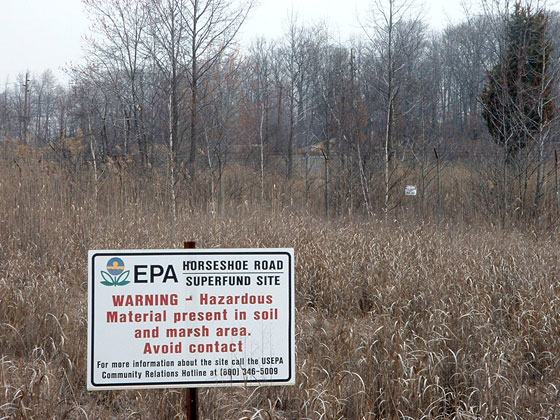Last week I presented a series on Emergency Planning and Community Right to Know Act (EPCRA), in the second part of that series I discussed Emergency Release Notification Requirements. I briefly mentioned the intersection between the Comprehensive Environmental Response Compensation and Liability Act (CERCLA) also known as Superfund. This intersection applies to releases (or spills…
EPCRA TRI Reporting
I will wrap up this series of posts on EPCRA regulations with the last of the required reports, the Toxic Release Inventory (TRI) Report. Let’s begin with identifying which facilities need to complete this report (see 40 CFR 372.22 for details). Facilities that have: More than 10 employees A certain North American Industry Classification System (NAICS) …
EPCRA Reporting
Over the past few posts I have discussed the requirements of Emergency Planning Community Right to Know Act (EPCRA) for both Emergency Planning and Emergency Release Notifications. In today’s post I am going to tackle part one of the last major section of EPCRA, reporting. There are three reports required by EPCRA: Chemical Inventory, Material Safety Data…
EPCRA Emergency Release Notifications
I am on a quest to demystify the requirements of the Emergency Planning and Community Right to Know (EPCRA) regulation. In the previous post I discussed the requirements of EPCRA Emergency Planning, today I am focusing on EPCRA emergency release notification. EPCRA standards require the reporting of a release of any Environmental Hazardous Substance (EHS) at or above…
EPCRA Emergency Planning Requirements
In my previous post I mentioned the Emergency Planning and Community Right to Know Act (EPCRA) is composed of three major parts. In today’s post I will focus on Emergency Planning, the portion of the law which intends to prepare state and local governments to respond to the most likely hazardous chemical emergencies. EPCRA requires the…
Introduction to EPCRA
Environmental regulations have the tendency to confuse even the most intelligent of professionals. A group of regulations that I revisit often is Emergency Planning and Community Right to Know (EPCRA). This week I will post of series that will detail the requirements of EPCRA. The goal of EPCRA, as indicated by its name, is to facilitate emergency…
Polychlorinated Biphenyls (PBCs) Regulatory Changes Ahead
Polychlorinated biphenyls (PCBs) are a class of man-made organic materials that are desirable because of the following characteristics: non-flammable, chemically stable, have a high boiling point and electrical insulation properties. Unfortunately the same characteristics cause them to persist and bioaccumulate in the environment. In addition, PCBs
Not all bulbs are created equally
In the last post I summarized requirements for universal waste. One waste stream that falls into this category are bulbs (lamps). Did you know that not all lamps need to be managed as universal waste that, in fact, some are not even classified as hazardous waste or universal waste?
Universal Waste Requirements
Universal waste is a special category of hazardous waste that includes batteries, pesticides, mercury-containing equipment and lamps. For the most part, these wastes are self-explanatory but often confusion arises from mercury-containing equipment which includes a device or part of a device (including thermostats, but excluding batteries and lamps) that contains elemental mercury integral to its function. Some…
Hazmat Transportation Training, Do You Need it?
Yesterday I shared the link to the Department of Transportation’s (DOT) Pipeline and Hazardous Material Safety Association’s (PHMSA) free training modules on my Facebook page and Twitter account. I wanted to use this post to discuss the training requirements for the Department of Transportation Hazardous Materials. In Are you Shipping Batteries? I mentioned that for many companies,…
